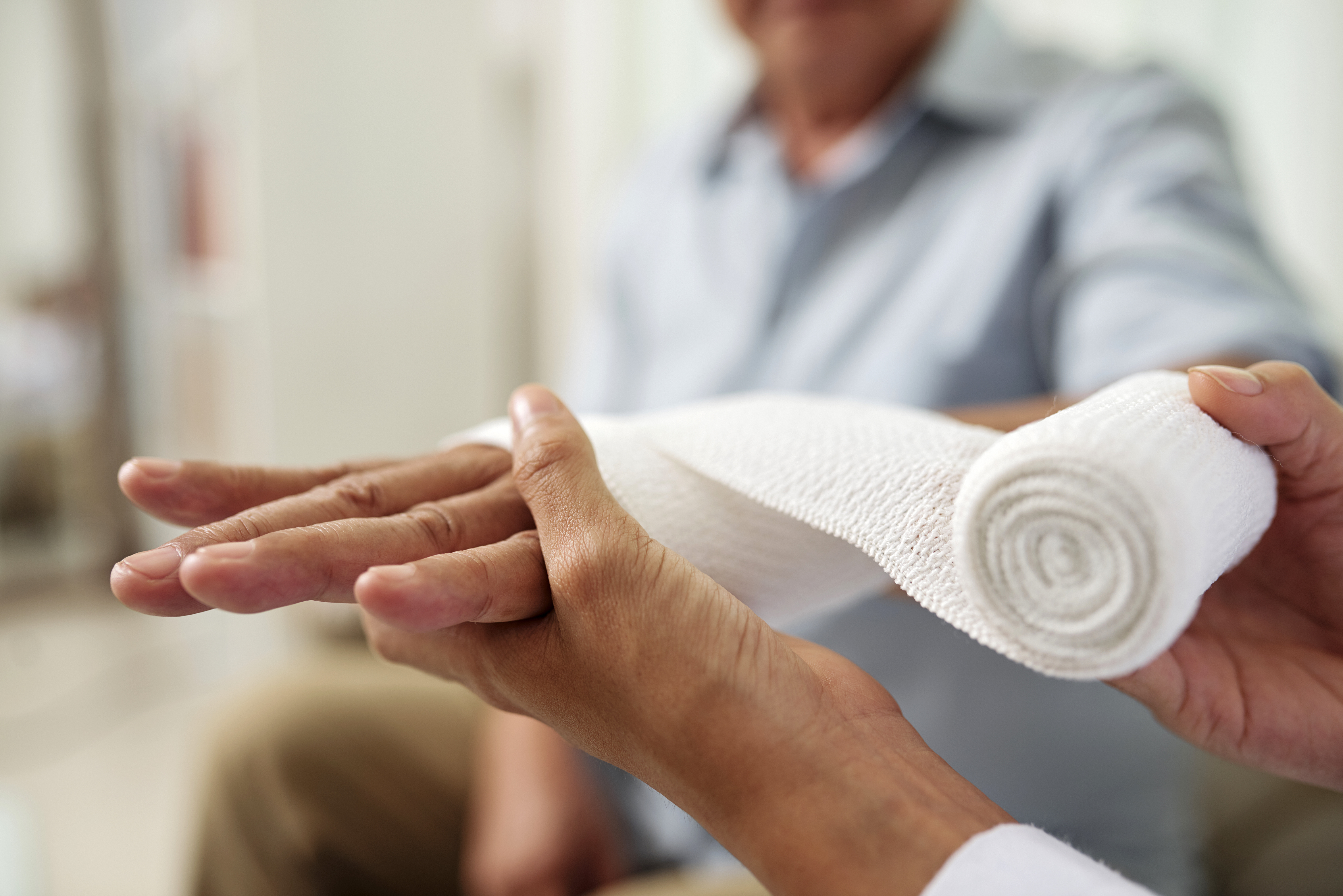Seniors are more likely than any other demographic to experience a fall. These falls can result in injuries ranging from mild to severe — even death. When injuries do occur, it’s important that a senior evaluate their injuries and seek medical attention if necessary. Common minor injuries include scrapes and cuts, depending on where the fall takes place. Seniors may hit an object during their fall, causing a cut. Or they might fall on a rough surface, resulting in a scrape. To help seniors heal effectively, here are some tips to prevent scarring for these types of injuries.
How Scars Form
Let’s start out by learning more about how scars actually form. When the skin gets cut or scraped, the body naturally responds, like the fire department receiving a 911 call. First, the body sends platelets to the area of injury. These platelets help the cut or scrape form a scab and stop bleeding. This is known as the hemostasis phase.
Next on the scene are white blood cells, which help fight off any bacteria or signs of infection. The area will naturally become inflamed as white blood cells flood to the area. As the skin heals, it may turn red around the area, and this is actually a sign that the natural healing process is working. However, if you experience prolonged redness, irritation, inflammation, or other symptoms, it may be an infection, and you should seek medical attention. These symptoms can actually increase your chance of scarring. This phase of the healing process is known as the inflammation phase.
If healing goes well, the body will begin to create new cells. The scab will begin to shrink away, leaving behind brand new skin in its place. This skin, however, may have a different texture or quality than the surrounding skin, resulting in a scar. Usually, scarring is more common in deeper cuts and scrapes, but it could occur in shallow cuts as well. This phase is known as the proliferation stage. Finally, the maturation stage occurs. This happens as the wound fully heals and a scar may or may not be left behind.
Types of Scars
Not all scars are created equal. There are different types of scars, and seniors may be more at risk of developing a certain type of scar than another.
- Cicatrix: These scars are flat or slightly raised. They are often pink or reddish, but they could still be paler than surrounding skin. These scars are considered normal.
- Hypertrophic: Hypertrophic scars are raised and firm. They may even be painful or restrict skin movement on the skin. These scars are more commonly found on the chest, shoulder, and upper back. However, they can form anywhere.
- Keloid: Keloid scars are raised and usually grow larger than the original wound. They can also be itchy or painful and may not develop until after a year after the injury.
- Contracture: These scars form tighter and thicker than the surrounding skin. As a result, they can restrict movement, especially when they are on joints, like elbows or knees.
Tips to Avoid Scarring
To help your skin heal properly and reduce your chance of developing a scar, here are some tips:
- Clean the area: If a senior falls and only has minor scrapes and cuts, it’s important that they clean them first. Bacteria, dirt, or other particles in the cut can cause infection and make it harder for the body to heal itself on its own.
- Cover the cut: The next step is to cover the cut or scrape. You may want to cover the wound with antibacterial cream or ointment as well. Ointment can help keep the wound moist, preventing it from forming a scab. Studies have shown that wounds with scabs take longer to heal and may get itchier. After ointment is applied, cover it with a bandage.
- Change the bandage: Replace the bandage daily to help keep the cut or scrape clean as it heals.
- Leave it alone: As a wound heals, it may get itchy. However, seniors should avoid scratching or picking at their scabs. This can cause more inflammation, which can increase the likelihood of developing a scar.
- Wear sunscreen outdoors: Even after the wound has healed, you should apply sunscreen to the area to minimize the appearance of the scar. The sun can cause redness or discoloration, which makes a scar more apparent.
- Wait it out: Scars often fade over time. So as the years continue to go by, seniors may notice that their scar doesn’t stand out as much as it once did.
If a senior has a deep cut that requires stitches, they should follow the specific instruction from their doctor. This can help reduce scarring for deeper injuries.
Scar Risk Factors
Certain individuals are more prone to scarring due to various risk factors, including the following:
- Younger age (which we will discuss in our next section)
- Female gender
- Darker skin
- Depth of wound
- Type of wound
- Genetic factors
- Bacteria
- High tension on the wound
- High blood pressure
- Skin diseases
Age May Be the Key
Recent studies have shown that seniors may actually have less scarring than younger adults. Scientists have identified a compound in the blood, SDF1, which plays a part in scar formation and tissue regeneration. Seniors actually have less of this compound in their bloodstream, which has shown to decrease scarring in seniors. As a result, seniors have a better chance of healing without a scar or healing with just a thin scar.
To learn more about keeping your senior safe after a fall, reach out to our senior care experts. All our staff is carefully trained on how to help prevent falls as well as how to respond if a fall does occur, giving you and your loved ones more peace of mind. You can also review our other fall-related resources to lean more.


